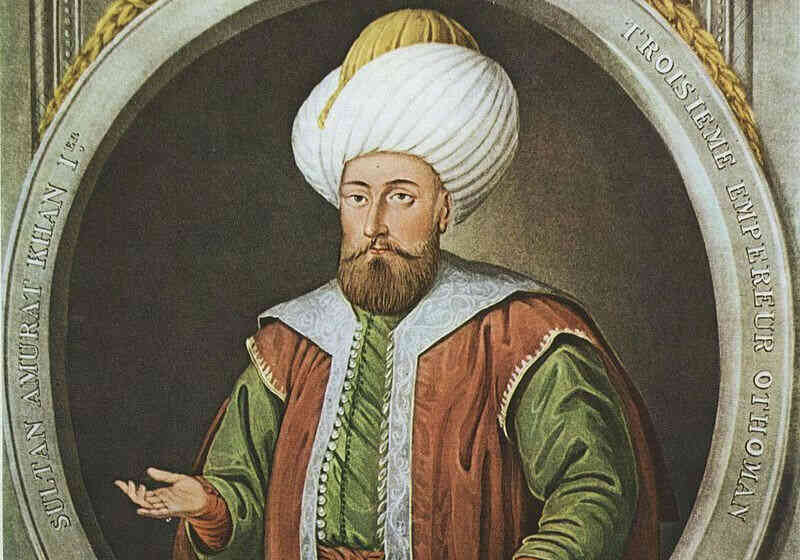I. Murad, Osmanlı İmparatorluğu'nun üçüncü padişahı olarak önemli bir yere sahiptir. Saltanatı boyunca devletin sınırlarını genişletmiş ve Osmanlı yönetim sistemine katkılarda bulunmuştur. Bu biyografide, I. Murad'ın yaşamı ve hükümdarlığı hakkında genel bilgiler sunulacaktır.
I. Murad, also known as Murad-ı Hüdavendigâr, was the third Sultan of the Ottoman Empire, reigning from 1362 until 1389. Born in 1326 in Bursa, his leadership defined a pivotal period in Ottoman history, characterized by territorial expansions, administrative innovations, and cultural advancements. His efforts in consolidating Ottoman power in Europe and Anatolia made him a transformative figure in the empire’s rise.
Early Life and Family Background
Birth and Heritage
Murad I was born into a politically dynamic environment where the Ottoman state was in its formative years. His father, Orhan Gazi, was the second ruler of the Ottomans, and his mother, Nilüfer Hatun, was of Byzantine origin. This unique parentage reflected the multicultural ethos of the early Ottoman court.
Education and Training
From an early age, Murad received training in governance, military strategy, and Islamic jurisprudence. His education, overseen by prominent scholars, prepared him for the complexities of ruling a rapidly expanding empire.
The Influence of Nilüfer Hatun
Nilüfer Hatun’s Byzantine background provided Murad with a broader understanding of diplomacy and governance, particularly in managing Christian subjects.
Bursa’s Role in Shaping Murad
Bursa, the Ottoman capital, was a center of Islamic learning and governance during Murad’s youth. This environment deeply influenced his administrative and cultural policies.
The Loss of Süleyman Pasha
Murad’s elder brother, Süleyman Pasha, was originally poised to inherit the throne. However, his untimely death in 1357 altered the line of succession, paving the way for Murad’s eventual leadership.
Ascension to the Throne
Murad’s Path to Leadership
Murad I ascended the throne in 1362 after the death of his father, Orhan Gazi. His succession marked the beginning of a new chapter for the Ottoman state, characterized by rapid territorial expansion and administrative centralization.
Challenges During the Transition
Murad faced significant challenges during his early years as sultan, including internal rivalries among the nobility and external threats from neighboring powers.
Strategic Vision
From the outset, Murad displayed a clear vision for the empire, emphasizing military conquest and administrative reform to strengthen Ottoman dominance.
Consolidating Power
Murad worked diligently to secure the loyalty of key Anatolian beyliks and to establish his authority over newly conquered territories, ensuring the stability of his rule.
The Importance of Diplomacy
Murad’s diplomatic efforts, particularly with neighboring Christian states, laid the groundwork for the empire’s later successes in Europe.
Military Campaigns
The Conquest of Adrianople
One of Murad I’s most significant achievements was the capture of Adrianople (modern-day Edirne) in 1363. This conquest not only expanded Ottoman territory but also provided a strategic base for further incursions into Europe.
Key Battles and Campaigns
The Battle of Sırpsındığı (1364)
This battle marked the first major Ottoman victory over a European coalition, signaling the empire’s growing strength in the Balkans.
The Battle of Çirmen (1371)
Murad’s forces decisively defeated the Serbian army, effectively consolidating Ottoman control over much of the region.
The Battle of Kosovo (1389)
The Battle of Kosovo was a defining moment in Murad’s reign. While the Ottomans emerged victorious, Murad was assassinated by a Serbian noble during the aftermath, making him the first and only Ottoman sultan to die on the battlefield.
Innovations in Military Tactics
Murad introduced strategic innovations, such as the disciplined use of light cavalry and the early stages of the devşirme system, which recruited Christian youths into the Ottoman military.
Impact on European Politics
Murad’s campaigns reshaped the political landscape of the Balkans, reducing the influence of traditional European powers and establishing the Ottomans as a dominant force.
Administrative Reforms
The Janissary Corps
Murad I is credited with founding the Janissary corps, an elite military unit formed through the devşirme system. This innovation became a cornerstone of Ottoman military success for centuries.
Judicial and Administrative Enhancements
Murad introduced key administrative roles, such as the kazasker (military judge) and beylerbeyi (provincial governor), streamlining governance across the expanding empire.
Taxation and Revenue Policies
To sustain the growing empire, Murad restructured the taxation system, ensuring a stable flow of revenue while maintaining fairness for the empire’s diverse populations.
Integration of Conquered Lands
Murad employed a combination of tolerance and pragmatism to integrate newly conquered territories, fostering loyalty among diverse communities.
Religious Institutions
Under Murad’s reign, Islamic institutions flourished. He commissioned the construction of mosques, madrasas, and endowments, promoting education and religious cohesion.
Cultural Contributions
Architectural Achievements
Murad oversaw the construction of numerous architectural projects, including mosques, madrasas, and public works in Bursa and Adrianople, reflecting the empire’s growing sophistication.
Patronage of Scholars and Artists
Murad’s court became a hub for scholars, poets, and artists, fostering a cultural renaissance that enriched Ottoman society.
Promotion of Islamic Education
Murad established educational institutions that promoted Islamic jurisprudence and theology, strengthening the empire’s cultural foundations.
Cultural Integration
Murad’s policies encouraged the coexistence of diverse cultural and religious communities, contributing to the empire’s stability and unity.
Historical Legacy in Ottoman Art
Murad’s reign set a precedent for the artistic and architectural patronage that became a hallmark of later Ottoman rulers.
Death and Legacy
The Battle of Kosovo and Murad’s Martyrdom
Murad I’s death at the Battle of Kosovo in 1389 was a turning point in Ottoman history. His assassination by a Serbian noble highlighted the high stakes of his military campaigns.
Foundations for Future Success
Murad’s administrative and military innovations laid the groundwork for the empire’s later achievements under his successors, particularly his son, Bayezid I.
Historians’ Perspective
Historians regard Murad I as one of the most transformative Ottoman rulers, whose reign bridged the gap between a fledgling state and a burgeoning empire.



